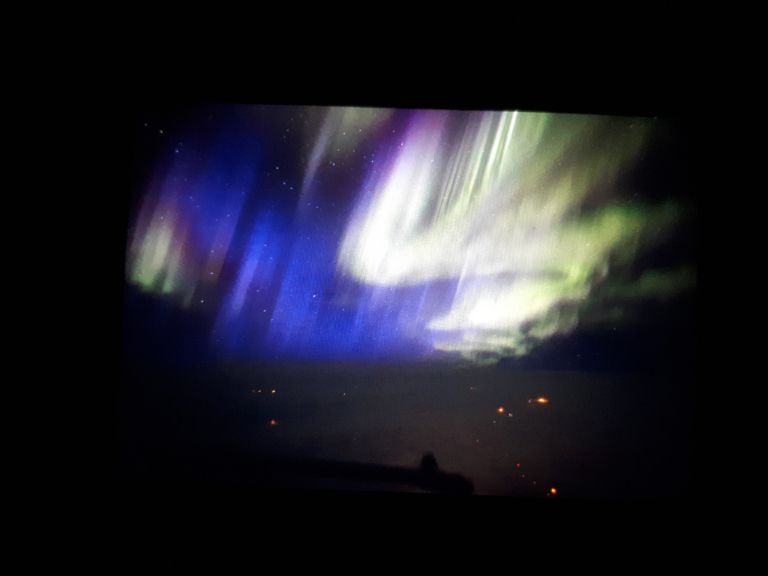Interplanetary Shock Wave

Source: wattsupwiththat.com
On April 19 to April 20 a shock wave in the solar wind hit the Earth's magnetic field causing a moderately strong G2 class geomagnetic storm. The intensity of the storm produced rare electric blue auroras which were visible over Canada and some northern American states.
The interplanetary shock wave hit at almost midnight UTC. The density of the solar wind around the planet intensified and the Earth's magnetic field allowed the inrush of the solar wind resulting in the sizable geomagnetic storm.
Auroras are normally green due to the concentration of oxygen. Blue auroras result from an abundance of nitrogen. The gas is ionized and emanates a glow. This is glow occurs when a gaseous element gets charged or ionized, when the atom absorbs the energy an electron gets pushed to a higher electron orbital. Once the energy recedes, the electron will fall to a lower orbital and the energy is released as a photon. The frequency of the photon depends on the element, for oxygen the frequency will show green light and for nitrogen the frequency will show blue light.

Source: wattsupwiththat.com
The above photo was taken in Kalispell, MT.
A interplanetary shock wave occurs when there is a disturbance in the gaseous material of the solar wind. Usually they result from a CME emitted from the sun. The larger the CME the further from the pole the aurora will be seen.
